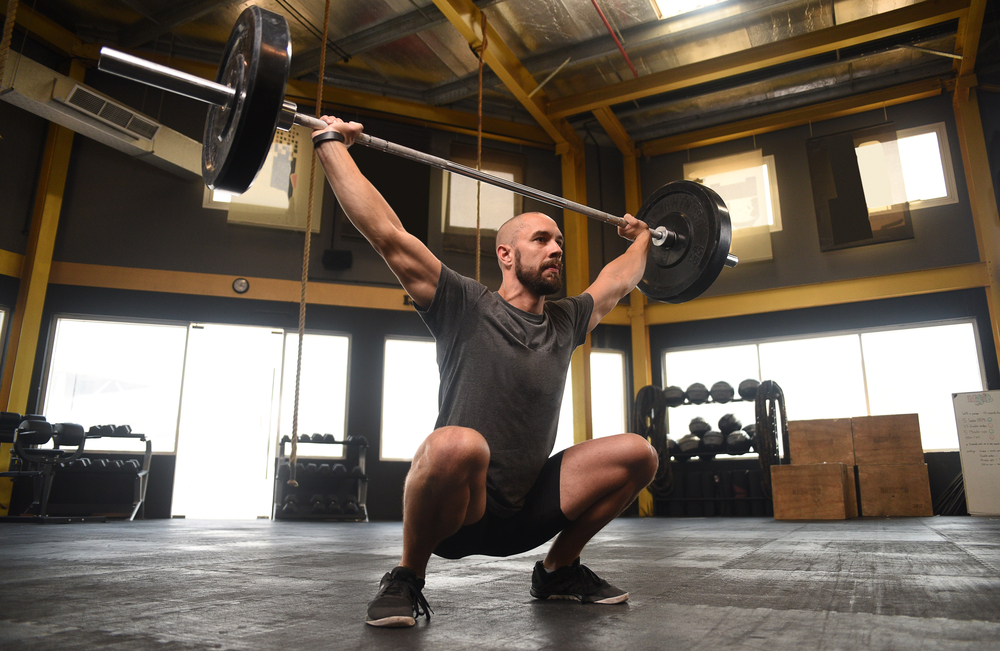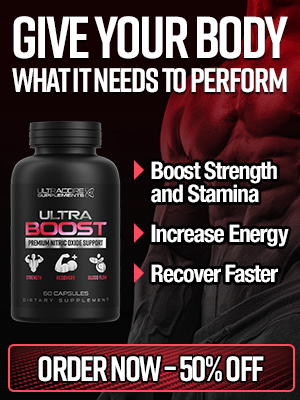Testosterone is a natural hormone that is highly responsible for maintaining muscle size and strength in men. It is responsible for many functions, and it plays a crucial role in body fat levels and reproductive and sexual development. In men, the testes mainly produce testosterone. As testosterone levels decline, men start to notice some symptoms. Some of these symptoms include sleeping disorder, fatigue, loss of muscle mass, hair loss, decrease in bone mass, increase in body fat, mood swings, and decreased sex drive.
Squatting is sometimes referred to as the king of exercises, which is a demanding exercise that works most of your body muscles and increases strength. Squats have also been found to increase testosterone levels when it is done at an appropriate intensity. Squatting is one of the essential exercises for men looking to boost their testosterone and develop their bodies. Most people treat it as an exercise for leg day, but it is a lot more than that as it works more muscles and not only the leg muscles. If you carry out your squats properly, it trains your lower back, hamstrings, glutes, quadriceps, and lower back.
In addition to training your leg muscles, this exercise also helps you develop a strong core and back. If you are looking to buff up, gain muscle mass, get a better shape, lower body fat, or boost testosterone, then squats are by far very essential to helping you achieve these goals. In addition to stimulating the release of testosterone, squats also help to burn fat, build muscle, and boost strength. The squatting exercise loads the bone profoundly, which in turn stimulates the bones to get dense. Dense bones are more durable and healthier, which makes them unlikely to break. It is believed that squats are not healthy for your back and knees, but squats strengthen them and increase flexibility because they move in a full range of motion.
Types of Squats
Workouts increase testosterone levels, and squats are not excluded from workout routines that increase T levels. There are different types of squats, and you need to know all of them if you are going to be going for a full-body workout. All these squats are ideal for boosting testosterone levels.
Back Squat
This type of squat is ideal for conditioning your lower body, and this is the movement you are expected to observe on the squat rack. The back squat is a type that focuses on the hamstrings, spinal erectors, glutes, and builds up your lower body mass.
To do this type of squat properly, you should have a grip on the bar that is a bit wider than shoulder-width as you place it below the top of your trapezius on your lower back.
Front Squat
 This type of squat is becoming widely known and is now mostly used in most workouts because it is relatively easier to execute than the back squat. The front squat focuses on your upper back and quadriceps specifically as you lift the barbell across your shoulders in front of you. Ensure that you have a perfect grip on the bar and move your elbows in a way that the bars point forward all through your movement.
This type of squat is becoming widely known and is now mostly used in most workouts because it is relatively easier to execute than the back squat. The front squat focuses on your upper back and quadriceps specifically as you lift the barbell across your shoulders in front of you. Ensure that you have a perfect grip on the bar and move your elbows in a way that the bars point forward all through your movement.
Although the front squat mostly focuses on your quadriceps, it still manages to work your hamstrings and glutes.
Overhead Squat
Just like the back squat and front squat focuses on different parts of your body, the overhead squats help you gain great muscular control and also improves your balance and mobility. In this routine, you need to press the barbell above your head before you perform a squat. Unlike the back and front squat, you need to grip the bar a bit wider because you will need mobility in your shoulders. The weight of the bar you use is not essential here, as you will gain better mobility and balance regardless.
Anderson and Zercher Squats
These squats are nowhere near as conventional as the others, but they also have their benefits. The Anderson squat is named after Paul Anderson, an Olympic weightlifter. This squat removes the bounce and momentum, which is because you begin at the bottom of the squat. You can execute this squat in the back or front squat style.
The Zercher squat focuses on your torso and upper back, and also eases the amount of compression your spine endures. In this routine, you hold the bar in the crook of your elbows, which is why it is advisable to start with a small weight before going for heavier ones.
Mastering the Squat
If you are a beginner and you are looking to boost testosterone levels with squats, you need first to master how to carry out the routine successfully.
Master the bodyweight squat
Firstly, you stand with your feet shoulder-width apart, and then you start bending your knees and sitting back with your hips. Go as far down as you can and then swiftly revert to your initial position. Throughout this routine, your back needs to be kept straight and your head up. Before you add a bar, you need first to learn this move as it is the first step to getting good results. Men with shallow hip sockets will be able to perform deep squats without any hassle. But men with deeper-set joints have to drop their knees to about 90 degrees.
Add the weight
For this, you need to stand with your feet a bit wider than before, then you hold a barbell across your upper back and ensure you have a good grip. Next, you gradually sit back into a squatting position, ensuring that you keep your back straight and your head up. Keep going down until your hips are in line with your knees; your legs should be at 90 degrees. Next, you push yourself back up while maintaining form.
Adjust your form
One of the most notable errors every beginner makes when squatting with weights is to turn their feet out a few degrees. It helps in lifting the weight but could deal damage over time. The best tip to follow is to keep your head up, and your back straight as this keeps your whole body engaged.
Why you should boost your testosterone levels
There are a lot of benefits to having high testosterone levels. The following benefits are applicable to men who have low testosterone levels and decide to boost it.
Healthy blood and heart
 It is the heart’s responsibility to pump blood to other parts of the body and provide the organs and muscles the oxygen they need to perform appropriately. Testosterone aids in the production of red blood cells through the bone marrow. There is a wide range of cardiovascular risks associated with low testosterone levels. A study has shown that men who boosted their testosterone levels back to normal have fewer chances of having a heart attack or stroke.
It is the heart’s responsibility to pump blood to other parts of the body and provide the organs and muscles the oxygen they need to perform appropriately. Testosterone aids in the production of red blood cells through the bone marrow. There is a wide range of cardiovascular risks associated with low testosterone levels. A study has shown that men who boosted their testosterone levels back to normal have fewer chances of having a heart attack or stroke.
More muscle, less fat
Testosterone plays a vital role in increasing muscle mass. Having a leaner body mass means that you have control over your weight and also have more energy. Men with low testosterone have been found to get more significant muscle mass and strength after opting to increase their testosterone levels.
Stronger bones
Testosterone is responsible for bone mineral density. Bone density experiences a decline as men age, and testosterone levels decrease. So having low testosterone means that you are at risk of weak bones and osteoporosis. Choosing to boost your testosterone will help you develop strong bones that will support your internal organs and muscles. It has been found that bone density increases as the testosterone levels rise.
Better Libido
Testosterone levels rise as a response to sexual activities and arousal. It has been proven that men who have high testosterone levels typically have better sexual activity. In older men, high levels of testosterone are needed for erectile function and libido. Boosting your testosterone levels will significantly improve your sexual health and performance.
Better mood
Low testosterone levels have been linked with a series of mood issues, which include depression and irritability. Men with low testosterone have also been found to experience a general sense of fatigue. Opting to boost your testosterone levels would improve your mood and well-being as well as reduce fatigue.
Better memory capabilities
Most studies have proven that men who have low levels of testosterone are more susceptible to suffering from Alzheimer’s disease. Testosterone has also been linked with thinking abilities like processing speed and verbal memory. Men that decide to boost their testosterone levels will notice improvements in spatial memory.
Conclusion
Successfully carrying out the squatting exercise is a good step in boosting your testosterone levels. In addition to squats, you can also add other multi-joint resistance exercises along with the right diet to ensure you get a great result. It is a natural thing for men to start noticing a decline in testosterone levels as they age, but keeping up the exercising routine could well that the decline will be delayed as much as possible.








COMMENTS